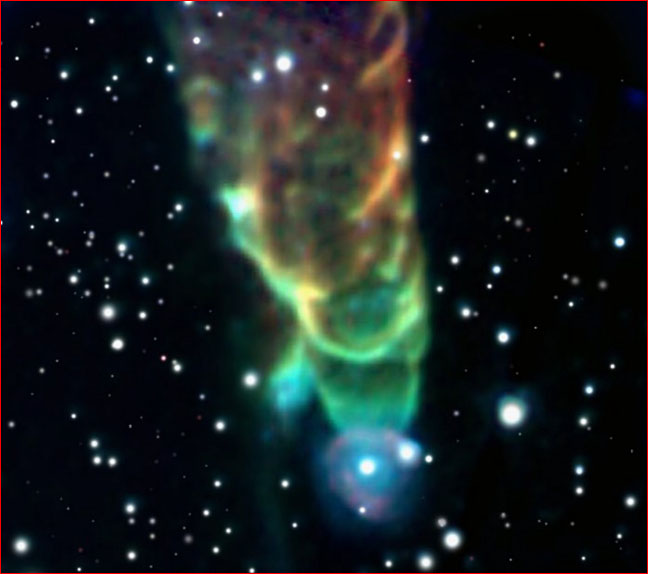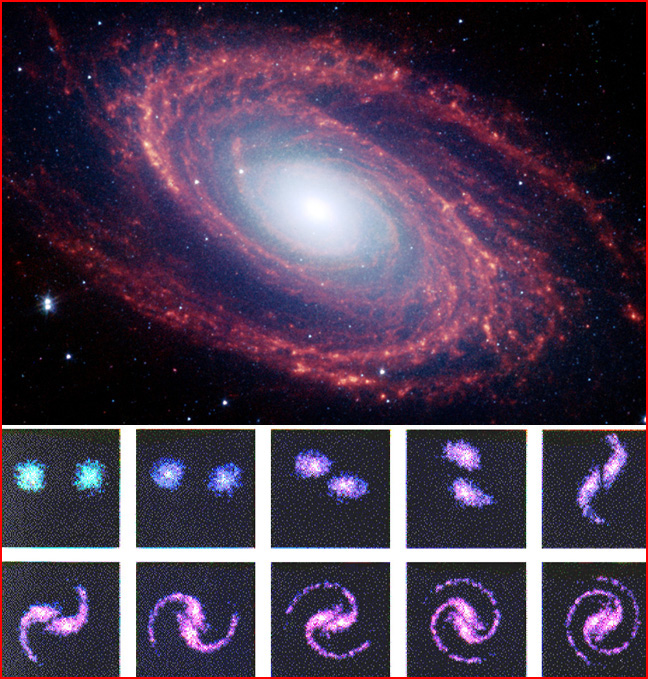I disagree.
And what creates magnetic fields? Electrons in motion.
... but they also form into Field Aligned Birkeland Currents...
A Birkeland current generally refers to any electric current in a space plasma, but more specifically when charged particles in the current follow magnetic field lines (hence, Birkeland currents are also known as field-aligned currents). They are caused by the movement of a plasma perpendicular to a magnetic field. Birkeland currents often show filamentary, or twisted "rope-like" magnetic structure...For examples of intersteller Birkeland currents, check out Herbig-Haro objects... some of the strangest astronomical objects ever seen....Birkeland currents can carry about 1 million amperes.[2] They can heat up the upper atmosphere which results in increased drag on low-altitude satellites.
Birkeland currents can also be created in the laboratory with multi-terawatt pulsed power generators. The resulting cross-section pattern indicates a hollow beam of electron in the form of a circle of vortices, a formation called the diocotron instability[3] (similar, but different to the Kelvin-Helmholtz instability), that subsequently leads to filamentation. Such vortices can be seen in aurora as "auroral curls".[4]
Birkeland currents are also one of a class of plasma phenonena called a z-pinch, so named because the azimuthal magnetic fields produced by the current pinches the current into a filamentary cable. This can also twist, producing a helical pinch that spirals like a twisted or braided rope, and this most closely corresponds to a Birkeland current. Pairs of parallel Birkeland currents can also interact; parallel Birkeland currents moving in the same direction will attract with an electromagnetic force inversely proportional to their distance apart (Note that the electromagnetic force between the individual particles is inversely proportional to the square of the distance, just like the gravitational force); parallel Birkeland currents moving in opposite directions will repel with an electromagnetic force inversely proportional to their distance apart. There is also a short-range circular component to the force between two Birkeland currents that is opposite to the longer-range parallel forces.[5]
Electrons moving along a Birkeland current may be accelerated by a plasma double layer. If the resulting electrons approach relativistic velocities (ie. the speed of light) they may subsequently produce a Bennett pinch, which in a magnetic field will spiral and emit synchrotron radiation that includes radio, optical (ie. light), x-rays, and gamma rays.

Herbig Haro object HH 49/50 extends a collimated, spiraled jet of plasmas 14 light years away from the object that created it.

Herbig Haro HH 111 shoots an extremely tight collimated jet of matter over 12 light years
yet still remains tightly collimated. This flies in the face of accepted physics
and the way gasses act in a vacuum.
The only known force that can prevent a stream of gas from rapidly dispersing in the vacuum of space is magnetism, and only electric currents can generate a magnetic field. Yet here we have a gas remaining collimated over light years of distance... ergo, there must be a magnetic force keeping it constrained... and to create the magnetic force there must be an electrical current flowing... over vast interstellar distances.
Birkeland Currents can be replicated in the laboratory and result in some very interesting structures that are seen duplicated in space in an extreme macro sense.

From Kristian Birkeland's series, 'The Norwegian Aurora Polaris Expedition 1902-1903,'
Volume 1: On the Cause of Magnetic Storms and The Origin of Terrestrial Magnetism,
published in 1908.
That's a magnetized ball, acting as a highly electrically charged cathode. Look familiar?
Here's another example of what can be seen in the laboratory and a corresponding example in the macro cosmos.

Above a spiral galaxy. Below simulated parallel
Birkeland currents interact to form a spiral object similar to a galaxy.
"To see the connection between plasma experiments and plasma formations in space, it is essential to understand the scalability of plasma phenomena. Under similar conditions, plasma discharge will produce the same formations irrespective of the size of the event. The same basic patterns will be seen at laboratory, planetary, stellar, and galactic levels. Duration is proportional to size as well. A spark that lasts for microseconds in the laboratory may continue for years at planetary or stellar scales, or for millions of years at galactic or intergalactic scales."
Kristian Birkeland was nominated no less than 7 times for the Nobel Prize in Physics. It was he who discovered and defined the Solar Wind
"It seems to be a natural consequence of our points of view to assume that the whole of space is filled with electrons and flying electric ions of all kinds." — Kristian Birkeland